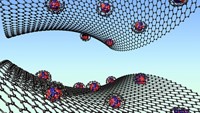Advertisement
Grab your lab coat. Let's get started
Welcome!
Welcome!
Create an account below to get 6 C&EN articles per month, receive newsletters and more - all free.
It seems this is your first time logging in online. Please enter the following information to continue.
As an ACS member you automatically get access to this site. All we need is few more details to create your reading experience.
Not you? Sign in with a different account.
Not you? Sign in with a different account.
ERROR 1
ERROR 1
ERROR 2
ERROR 2
ERROR 2
ERROR 2
ERROR 2
Password and Confirm password must match.
If you have an ACS member number, please enter it here so we can link this account to your membership. (optional)
ERROR 2
ACS values your privacy. By submitting your information, you are gaining access to C&EN and subscribing to our weekly newsletter. We use the information you provide to make your reading experience better, and we will never sell your data to third party members.
Metal-Organic Frameworks
Ionic liquids boost gas uptake in MOFs
Postsynthesis modification of common MOF improves its CO2 uptake and selectivity
by Mitch Jacoby
July 22, 2018
| A version of this story appeared in
Volume 96, Issue 30

Modifying common metal-organic frameworks (MOFs) with ionic liquids is a simple way to boost the porous materials’ gas-uptake properties, according to a study (J. Am. Chem. Soc. 2018, DOI: 10.1021/jacs.8b05802). Endowed with extreme surface area and porosity, as well as the ability to be tuned chemically, MOFs draw widespread attention for use in gas separation and storage and other applications, some of which have been commercialized. To tailor the materials’ structures and properties, researchers have synthesized thousands of MOFs mainly by varying the building blocks. Some chemists opt instead to identify a promising MOF for a targeted application and then customize the material via postsynthesis modification. A team led by Seda Keskin and Alper Uzun of Koç University in Istanbul followed that approach to improve CO2 uptake in ZIF-8, a common imidazolate framework. By treating hydrophobic ZIF-8 with a hydrophilic imidazolium ionic liquid in which CO2 is highly soluble, the team formed a chemically selective shell on the MOF exterior. Tests show that CO2 adsorption in the new material is 5.7 times as high as in untreated ZIF-8, and selectivity for CO2 over methane jumped by a factor of 45—improvements that make ZIF-8 attractive for carbon capture and natural gas purification.




Join the conversation
Contact the reporter
Submit a Letter to the Editor for publication
Engage with us on Twitter